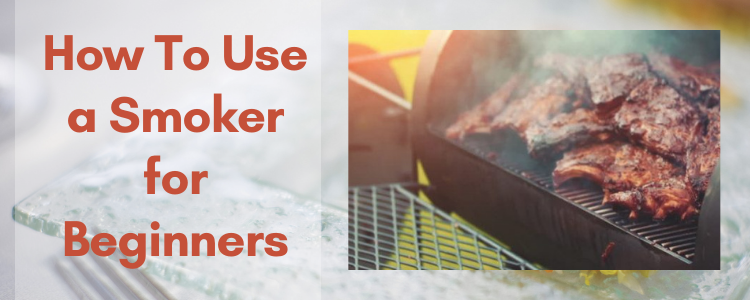The smell of smoke from a campfire is familiar to most of us. Imagine that fragrance being engrossed in the soft juicy portion of the meat you’ve ever eaten. That’s what you get when you smoke a piece of meat. But have you ever wondered what “smoking” meat means? Are there multiple ways to smoke? What sets it apart from other cooking methods? How to use a smoker for beginners?
Smoking is a gentle art that takes more talent than grilling burgers and brats. By the end of this post, you will know everything about different types of smokers, how they operate, and all the basic information related to smoking your favorite food items.
What and Why Smoky Flavour Food?
Smoking meat is a method that makes the meat an actual barbecue. When people talk about “smoking meat,” they’re usually stating one of two approaches:
- Imparting and dehydrating antimicrobial qualities to meat through prolonged exposure to smoke and heat
- Grilling it.
The first approach is old, used to preserve meat. Barbecuing is the now-more-common use of the phrase, which involves cooking meat gradually over indirect heat over long periods (to 16 hours), while the smoke spices and textures the meat. In this detailed guide on smoking meat.
What are Direct and Indirect Heating?
1. Flavour of The Meat
The meat absorbs the smoke’s slightly sour, thick, soothing flavor as it sits over the flame, providing an all-natural, unique, and dare we say, smokey flavor. Folks have been doing this for thousands of years to cook and flavor their food.
2. The Bark of Smoky Meat
The bark, a black, spicy, chewy, and sour crust-like surface made on the external of the meat through the smoking procedure, is created by engaging smoke. The bark is one of the most delicious aspects of the meat, and it’s a key element in arbitrating smoked meats. The second advantage of smoking meat is that it produces a tender and softer cut of meat due to its slow culinary method.
3. The Texture of the Meat
The meat dries up fast when cooked at high heat. Any remaining moisture is blasted out of the flesh, leaving it dry, tough, and hard to chew. Cooking meats at high heat also means you have fewer governors over the end product because the interior hotness might quickly climb above your intended temperature before you notice it. low-and-slow smoking prevents dampness from vanishing too quickly, resulting in the ideal blend of softness and juiciness.
How to Keep Meat Moist While Grilling?
How do Smokers Work on Direct and Indirect Heat?
Meat can be cooked in two ways: over direct heat or indirect heat. Grilling those delicious burgers over direct fire is the way to go. However, you’ll be using heat indirectly to smoke. Grilling involves utilizing straight heat for short periods, whereas smoking involves using indirect heat to prepare meat at a low temperature. In essence, a grill and smoker are opposed.
The secret to smoking is indirect heat. In other words, the meat will not be placed directly on top of the flame or heat source; this is very hot and difficult to regulate. Instead, you’re allowing the flame’s heat and smoke to drift over the meat while keeping it out of the way.
Cooking using indirect heat is straightforward when you use a dedicated smoker. A smoker’s design is unusual because it keeps the meat out of straight heat while still letting smoke absorb and reach it. An excellent smoker is built to ensure that heat circulates evenly everywhere in meat during cooking.
How to Use a Charcoal Grill to Smoke Meat?
If you’re smoking on charcoal or a gas grill, choose a 2-zone arrangement, which divides the grill into a direct heat zone for searing and browning and an indirect zone for slow cooking and smoking. It’s straightforward to set up a two-zone configuration.
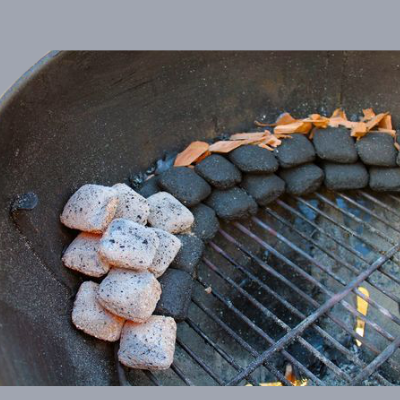
Stack all charcoal on one side, leaving the other side unfilled, then light the grill. The coals will burn hot, allowing you to brown and sear your steaks. But, for smoking, the real magic lies on the other side. You can get the sear if you have a kettle grill, which is great.
Impact of Indirect Heating
The indirect heat will not be hot enough for browning, but it will allow you to cook food at a lesser temperature using convection. Controlling the fire size on the hot side will let you get the ideal temperature of 225°F to 275°F for maximum juiciness and tenderness.
It’ll take some practice as you figure out how much charcoal to expend and how your smoker responds to diverse weather conditions. With the help of a BBQ thermometer, though, it’s more than achievable.
How to Smoke Meat on Electric Grill
How to Use a Gas Grill to Smoke Meat?
It’s significantly easier to set up 2-zone cooking on a gas barbecue. Turn on one side of the grill’s burners while leaving the others off. It will take some trial and error, like charcoal, to figure out which burners to turn on and how high to turn them up. However, adjusting the temperature and getting it to 225°F is simple after doing that.
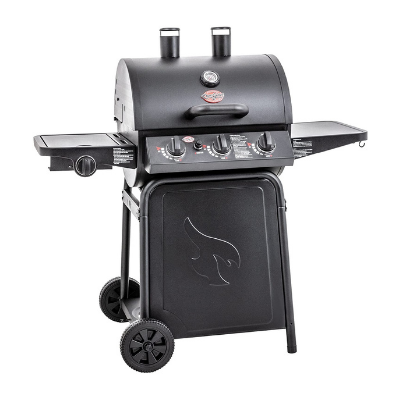
Place a water pan on the grill to help maintain a consistent temperature while employing 2-zone cooking. When the heat source surges or drops rapidly, water absorbs the heat and then radiates it again, steadying the total grill temperature. Evaporating water adds moisture to the meat, preventing it from drying out and keeping it wet and tasty.
How Much Time Will it Take to Smoke Meat?
Smoking times differ greatly. Providing a one-size-fits-all solution is difficult. The size of the cut, cooking temperature, amount of salt, wetness, and even the weather all affect cooking time. A rough estimate can be made: For a brisket or pork butt, allow 1.5 hours per pound at 225°F. An 8-pound brisket will take about 12 hours to cook. Increase the temperature to 275°F, and you’ll get approximately half the time with a comparable outcome. The caveat is that some factors may lengthen the process.
A moist piece of beef takes longer to cook because the water content causes the meat to “sweat.” A chilly, windy night can also cause heat to escape, lengthening cooking times. As a result, a rule of thumb is exactly that. It would help if you always used a reliable meat thermometer to ensure that your meat is cooked properly and safely.
Best Pellet Grill for Cold Weather.
Can I Flip the Meat While Smoking?
No, this is a typical blunder made by many new smokers. Because the meat cooks indirectly when smoked, you don’t have to worry about one side heating hotter than the other. That implies keeping the lid closed (but minimally vented) until the meat is done. “If you’re looking, you ain’t cooking!” as the saying goes.
Only move your set-up if you need to take place for more wood chips or charcoal or if you plan to spritz the meat at regular intervals.
Can Pre-cooked Meat be Smoked?
Yes, you can smoke already-cooked foods. You may wish to do this so that you won’t have to worry about food temperatures and will have a significantly shorter cooking time. If you’re going to smoke precooked meat, make sure it hasn’t been smoked before it gets to your grill.
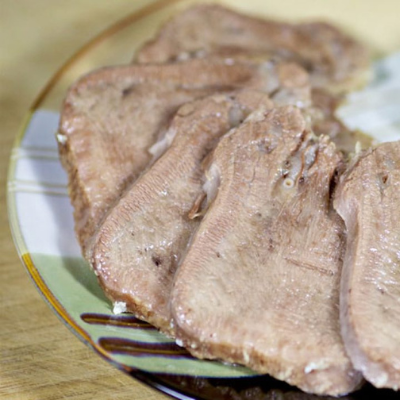
Otherwise, you risk adding too much taste, which will likely result in an overwhelming amount of smoke flavor for some palates. Only move your set-up if you need to take place for more wood chips or charcoal or if you plan to spritz the meat at regular intervals.
How to Use a Smoker for Beginners?
If you are planning to use a smoker for the first time, then the following step will help you to understand the basics of using a smoker.
Step 1: Step Up the Device
• Assemble Everything.
Electric, charcoal, gas, and water smokers are common choices for everything from jerky to turkeys. Electric and gas smokers cook meat slightly faster than other types of smokers.
If you just bought a smoker, put it together. Keep a close eye on the firebox and the air vents. These are important pieces of the smoker that, if destroyed, can cause a fire or spoil the meat.
• Set your Smoker Before Cooking With it.
In the firebox, you’ll need to build a fire. Preheat to 400 degrees Fahrenheit (204 degrees Celsius), then reduce to 225 degrees Fahrenheit (107 degrees Celsius) to smoke for several hours. In the smoker, impurities will be removed, and a layer of seasoning will be applied.
• Purchase the Wood Chips or Charcoal.
Wood chips, which come in oak, alder, cherry, hickory, and apple, are commonly used by smokers to create a smoky taste. Make sure the wood you choose is chemical-free. This is also true of charcoal smoking because the chemical vapors will immediately contact your meat. Instead of creating your chips, starting with pre-soaked chips is good. Purchase the wood chips or charcoal.
Different Types of Wood Chips and their Flavor.
Step 2: Preparing Meat
- Come up with a dry rub or marinade recipe for your smoked meat. Prepare it the day before you intend to smoke.
- Apply your meat to the rub or marinade.
- Fill a plastic or glass container halfway with meat.
- Refrigerate it for up to 1 day in the refrigerator.
Step 3: Techniques for Smoking
Fill your smoker with wood chips. It might be charcoal, a propane gas tank, or even an electrical hookup.
- If you’re using wood chips, put them in now. Make sure you have enough to replenish the smoking chamber nearby.
- If you’re using a gas smoker, wrap the chips in foil before putting them in. Make 6 or more holes in the top of the packet. Place the packet close to the heat source to ensure that it produces smoke.
- If you use a water smoker, you can add fresh herbs to the water to enhance the flavor of the meat.
How to Use Wood Chips in a Grill?
Get your Fire Going:
Open up the air vents wide to allow air to circulate the wood or charcoal. Allow it to heat for at least 20 to 30 minutes after that. While your fire may initially reach high temperatures of 400 degrees, you will want it to drop to a lower temperature. Turn the air valves nearly closed after 30 minutes to prevent fire and encourage smoldering coals or wood.
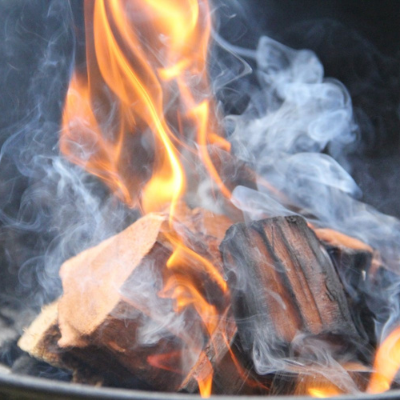
Temperature:
A temperature of 180 to 275 degrees Fahrenheit is ideal (82 to 135 degrees Celsius). Depending on the type of smoker, the type of meat, and the size of the meat pieces, the temperature should be adjusted. Fish, for instance, should be smoked at a lower temperature than meat.
Large pork shoulders can tolerate higher temperatures than little beef jerky pieces. Because electric and gas smokers cook at a higher temperature reducing the heat. Place the meat on a rack or numerous racks to smoke.
Step 4: Time for Smoking
Only check on the meat once or twice during the smoking procedure. To replenish the fuel and wood chips, you’ll need to inspect them.
- Keep in mind that every time you open the smoker, heat escapes.
- For each pound (0.45kg) of meat, smoke for 1 to 1.5 hours.
- Aim for 1 hour per pound if you believe your smoker cooks at a higher temperature. You can also cook at a lower temperature for longer.
- Every 2 to 3 hours rotate the meat.
- Before turning the meat, smear some marinade on it.
- At least 1 hour before the meat is supposed to be done, check on it. It’s preferable to undercook the meat than overcook it because you can always put it back in the smoker and cook it more.
- Small offset home smokers are prone to overcooking. When the meat appears to be done, remove it from the pan. Remember that some woods can turn meat redder, making it difficult to discern when it’s done.
Conclusion
What are you waiting for now that you have all the tools to smoke? Make some wonderful dishes with your new understanding of how to smoke meat. While your first attempt may not be perfect, smoking your meat is a better technique to achieve your desired results.
You will have the best meal of your life once you finish if you are patient and prepared to go through a few experiments to find the ideal formula. As the saying goes, anything worth doing is worth doing well. Enjoy smoky meat.

